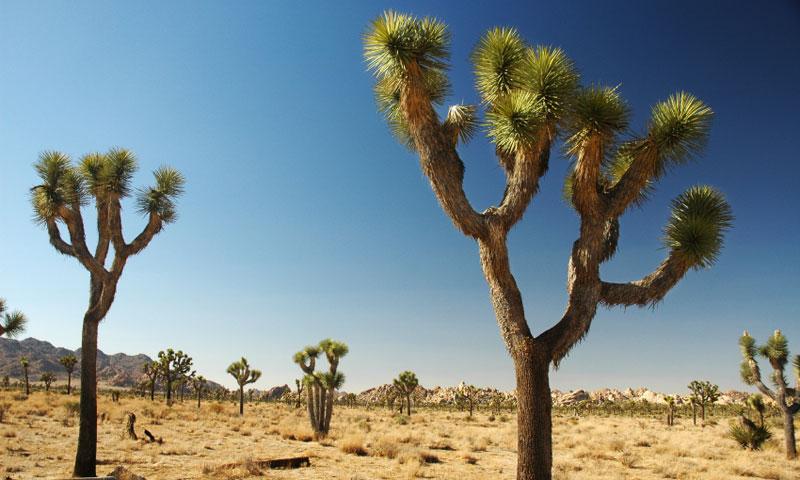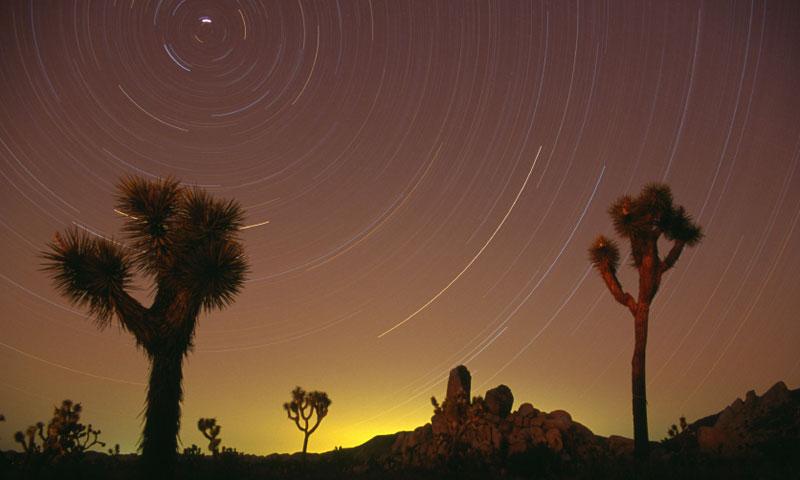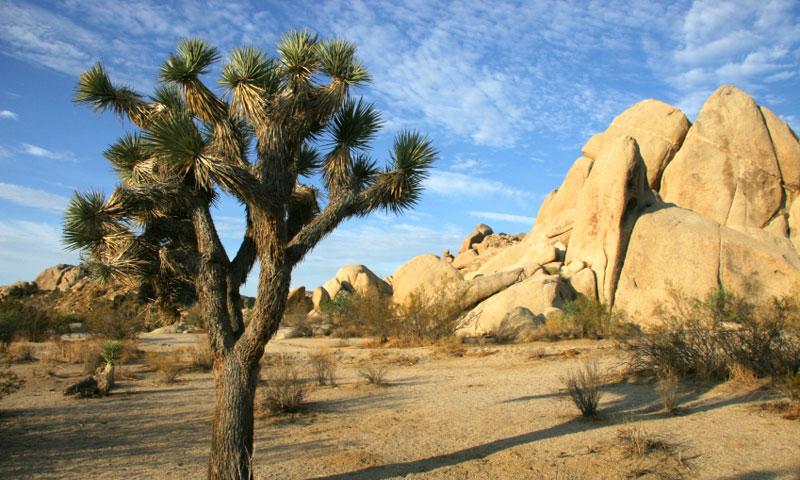- Visit Joshua Tree National Park for a wide array of sights and outdoor recreation
- Visit in the spring after good rainfall to see the abundant wildflowers
- Hike the Lost Horse Mine Trail to really experience the park
- Mountain bike on the Black Eagle Mine Road and marvel at the scenery
What can I see and do at Joshua Tree National Park?
- Viewing Wildflowers: When the area has received good rainfall during the fall and winter, springtime at Joshua Tree is an amazing sight of blooms, the wildflowers creating a colorful palette in the lower elevations. It’s time to get out your camera and take memories home with you.
- See the Sights in the Park: There are many interesting spots to put on your itinerary when visiting Joshua Tree. Take the short loop hike to Skull Rock, view Black Rock Canyon and see Indian Cove as well as stop at any or all of the visitor centers.
- Hiking: The multitude of trails in Joshua Tree National Park provide plenty of hiking through the canyons and to the top of summits where you can take in the sights. Lost Horse Mine Trail, Lost Palms Oasis, Ryan Mountain – the list of trails is long and inviting.
- Nature Walks: For families, nature walks provide not only an up close view of the geography of the park, but some great time together. Arch Rock Trail is a 0.5-mile loop with a natural arch, Barker Dam is a 1.3-mile loop where you can see a water tank built by early ranchers, and Cottonwood Spring is a one-mile walk among the plants and animals of the desert.
- Birding: You may see the greater roadrunner, a mockingbird, the dark-eyed junco or Gambel’s quail, all who live here all year round. Visitors include the yellow warbler, lazuli bunting and western tanagers.
- Horseback Riding: Experience the park while horseback riding. There are 253 miles of trails where you can ride a horse through canyons, across dry washes and over open lands.
- Mountain Biking: Bike the unpaved roads through the park for an incredible experience. Try Berdoo Canyon Road, Black Eagle Mine Road or Old Dale Road for some excellent scenery.
- Climbing: With over 400 climbing formations and around 8,000 routes to attempt, you will find Joshua Tree National Park makes the perfect place to come for climbers and boulderers from all over. No matter your climbing ability, you’ll find the ideal spot to test your strengths.
- Camping: Nine campgrounds at varying elevations offer wonderful amenities and allow you to stay close to all the adventure in Joshua Tree. Black Rock Campground has 100 sites while Indian Cove has 101, or you can stay in the smaller campgrounds such as Hidden Valley or White Tank.
Where is Joshua Tree National Park?
Joshua Tree National Park is 381 miles from Grand Canyon. Take Arizona Highway 64 west to Interstate 40, heading west towards California. Exit 48 gets you to US Highway 95 south. Follow 95 to California Highway 62, taking a right. After 40 miles, you will come to California Highway 177 to Interstate 10 west. From the Interstate take exit 168 and follow the signs.
When is Joshua Tree National Park open?
The park is open all year and can be visited at any time. You will find spring and fall are the best seasons to come.
How much does Joshua Tree National Park cost?
Entrance fees for the park are $15 for a 7-day vehicle permit or $5 (good for 7 days) for an individual entering on foot, bicycle or motorcycle.
Who can I call if I have more questions?
If you need more information call Joshua Tree National Park’s visitor phone at (760) 367-5500.





